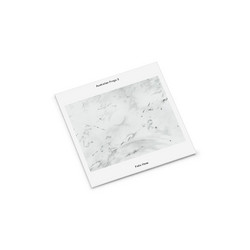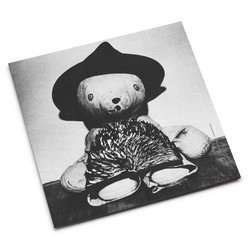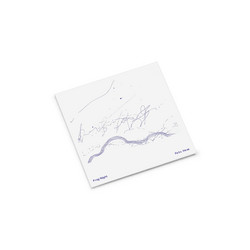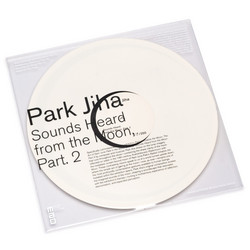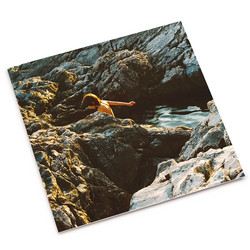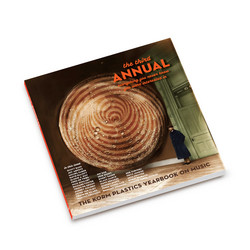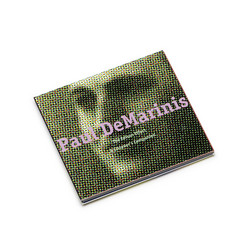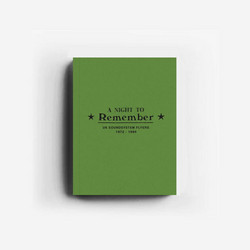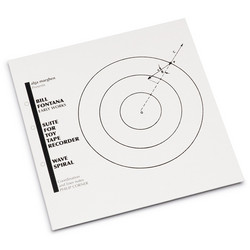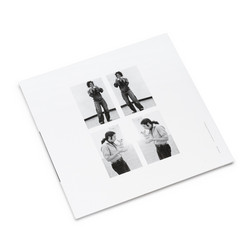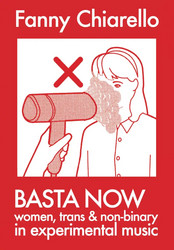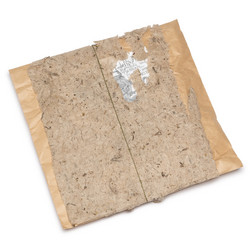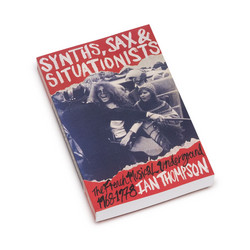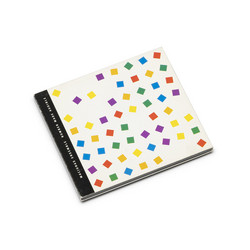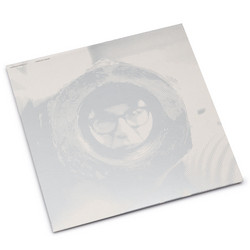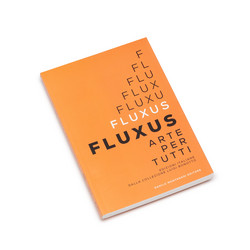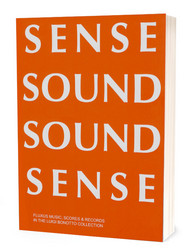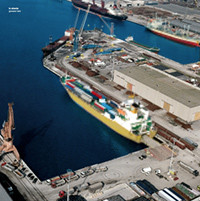"My first contact with the Pari&Dispari Archive and the Panizzi Library of Reggio Emilia dates back to nearly a year ago, when I was given the opportunity to collaborate in an exhibition project tied to documenting important performance experiences derived from the work and career of Rosanna Chiessi.
This consisted in a visual trajectory comprised of images dedicated to many events, exhibitions, and performances organized by Chiessi for fairs in Bologna and several other places. The experiences described by the images I was shown were truly historic experiences, ones that were crucial for the evolution of artistic practice as well as for its treatment and visibility, even and especially due to the prestige and level of the international artists involved as well as the relevance of their works. As an example, I would like to cite the project Chiessi realized (with Peppe Morra) for ArteFiera in 1976, the year in which the Pari&Dispari stand was transformed into a stage (the initial idea—which went unrealized due to the fair’s opposition—was to create a circus tent) that hosted eight performances, one for each day of the fair, by Hermann Nitsch, Joe Jones, Takako Saito, Giuseppe Desiato, Geoff Hendricks, Urs Lüthi, Franco Vaccari, and Heinz Cibulka.
Viewing the images from this particular event, together with those of the countless photographs that Chiessi had carefully gathered during those years to later re-present them—put into proper order and accompanied by colorful anecdotes and personal details—in albums now conserved by the Panizzi Library in Reggio Emilia, immediately provoked in me a lively curiosity and a genuine emotion for the life story of this figure, who was radically anchored to the region in which she worked, but also so open to foreign influences and to new tendencies.
I immediately thought that this exceptional material deserved more than the simple exhibition of a restricted selection of photographs. Starting from these images, tales, and experiences, one could then structure a broader trajectory that would return the proper dimension and appropriate weight to what Chiessi and her commitment had meant for a specific territory, a creative context, and several generations of artists. It occurred to me that this could be the occasion to once again put together certain works, many of which had never been shown in a public space, works that could testify to the incredible career of Rosanna Chiessi and Pari&Dispari.
Once we had honed in on the right content, it was time to find the right container. We immediately thought of the Project Room of MAMbo as the most appropriate place to host this exhibition event. MAMbo is the Museum of Modern Art in Bologna and, as a public institution devoted to modern and contemporary art, has among its most important roles that of exploring and expressing the artistic context of the region in which it finds itself. The Project Room’s programming is devoted entirely to this specific objective: an autonomous hall, located (not by chance) in the middle of the permanent collections, which hosts temporary projects dedicated to exhibiting artistic excellence that bears special relevance to the region in question. The new vocation of this space and the temporal dimension of the projects it hosts allowed for a more radical scientific approach, one anchored in historical, archival research, which made it a space more easily open to collaborations—as was true in this case—with important research and conservation projects.
Once the project was outlined and the space was chosen, there came the most complicated but also most exciting task, that of selecting, among the enormity of materials available (albums, photos, works, stories, edition, publications) the objects and references that could best narrate the life and work of Rosanna Chiessi, as well as the legacy of her work two years after her passing. Given that exhaustiveness, in this context, was not possible (and perhaps even undesirable) because there were simply too many references, details, and narratives for a single room, the choice—due in no small part to the museum context we had chosen—was to start from the works themselves: protagonists and witnesses of the history and stories of Rosanna Chiessi.
Thanks to the extraordinary help of Pari&Dispari’s Rosanna Chiessi archive and an important collector who had been present for and contributed to exhibitions and initiatives of Pari&Dispari, we were able to track down many important works, some of which are now being shown publically for the first time.
The exhibition opens with Chiessi’s portraits of Ann Tardos and the “key” symbol of Pari&Dispari designed by Giulio Bizzari and Corrado Costa, cast in iron by Bruno Picariello, tracing the title and nature of the project.
Once one has entered the exhibition, the show tries to recreate the creative atmosphere of Chiessi’s life and action, an atmosphere so dense with stories and interconnections, with works on the walls and in cases surrounding a round table, for the first time exhibited in public, a silent witness and protagonist of many of the performances organized at Cavriago, like the one from May 11th, 1989, in which, the exhibition describes, Charlotte Moorman (on Rosanna’s birthday) wished to surprise her with a performance dedicated to her. She covered the table with red rose petals, placed the music stand atop it, and began to play various pieces on the cello.
The placement of the works on the walls in the exhibition hall follows a not especially rigorous thematic order, suggesting possible paths to visitors but also leaving them open to create their own visual and conceptual connections. The works on the first wall revolve around one of the research interests predominant in Chiessi’s work: an attention to the medium of performance and to experimentation within this type of artistic expression, including participatory and collective influences. In this context, for example, we find the works of Alison Knowles, Allan Kaprow, Dieter Roth, Philip Corner, and the chair that Geoff Hendricks used at the center of his performance at the Basel fair in 1975.
The large central wall is dedicated to Chiessi’s interest for Asian artists and, in particular, for the Gutai movement, with a great work by Shozo Shimamoto placed near the shoes the artist used in the public performance in 2011 at Palazzo Magnani in Reggio Emilia. Certain objects, such as Shimamoto’s shoes or Beuys’ overcoat, are paired throughout the exhibition with actual works and reflect the intimate rapport with artists that characterized Chiessi’s work.
Following the track of the exhibition, one arrives to the great wall dedicated to music and sound, which were for her whole life essential and constitutive elements of Chiessi’s work as critic and curator. The works of Nam June Paik, Charlotte Moorman, Giuseppe Chiari, and Urs Luthi illustrate this lineage, which finds its most significant moment in the Fluxus concert at the small Teatro Dante in Cavriago, organized in 1977 and led by Geoff Hendricks, Joe Jones, and Takako Saito, who performed works by, among others, George Brecht, Dick Higgins, George Maciunas, and Robert Watts. In her photo albums, Chiessi remembers how fun and participatory the event was, especially when the orchestra member descended on the floor and tied the audience to their chairs.
The exhibition comes to an end by leaving the story open and seeking to visually represent how malleable and expandable Chiessi’s message still is, as the highest expression of a specific region but also as a conscious, profound explorer, discoverer of talents, and avant-garde thinker. Open to the other, to the foreign, to the different—this kind of openness always characterized her journey, hence the great map of Prinzendorf by Hermann Nitsch and the edition with the backs of trucks photographed by Franco Vaccari.
The show also offers the possibility of rediscovering Chiessi’s thoughts through the albums that are the basis for the whole project: “In 1974, I organized a bus from Reggio Emilia to Prinzendorf, Nitsch’s castle close to Vienna, where Hermann undertook his spectacular theatrical show lasting 24 hours. We left at four in the morning and the driver confused us for a volleyball team. I met so many people, artists, and collectors, among whom I recall Franco Vaccari, Takako Saito, and Peppe Morra. It was truly unforgettable: rituals in the yard, in the park, in the cantinas, and in the attics. Everything was cheerful, until the light of morning, animated by music and dance, with food cooked by Peter Kubelka.” More: “My friendship with Franco dates to the start of the ‘70s, when we began planning the edition “I camion.” Vaccari photographed, for 700 kilometers, from a car, the backs of trucks that he was passing. The work had great success.”
This is how we conceive of the exhibition, like Rosanna Chiessi’s work—an infinite voyage with artist friends, accompanying them in the realization of their works. Forever."
This consisted in a visual trajectory comprised of images dedicated to many events, exhibitions, and performances organized by Chiessi for fairs in Bologna and several other places. The experiences described by the images I was shown were truly historic experiences, ones that were crucial for the evolution of artistic practice as well as for its treatment and visibility, even and especially due to the prestige and level of the international artists involved as well as the relevance of their works. As an example, I would like to cite the project Chiessi realized (with Peppe Morra) for ArteFiera in 1976, the year in which the Pari&Dispari stand was transformed into a stage (the initial idea—which went unrealized due to the fair’s opposition—was to create a circus tent) that hosted eight performances, one for each day of the fair, by Hermann Nitsch, Joe Jones, Takako Saito, Giuseppe Desiato, Geoff Hendricks, Urs Lüthi, Franco Vaccari, and Heinz Cibulka.
Viewing the images from this particular event, together with those of the countless photographs that Chiessi had carefully gathered during those years to later re-present them—put into proper order and accompanied by colorful anecdotes and personal details—in albums now conserved by the Panizzi Library in Reggio Emilia, immediately provoked in me a lively curiosity and a genuine emotion for the life story of this figure, who was radically anchored to the region in which she worked, but also so open to foreign influences and to new tendencies.
I immediately thought that this exceptional material deserved more than the simple exhibition of a restricted selection of photographs. Starting from these images, tales, and experiences, one could then structure a broader trajectory that would return the proper dimension and appropriate weight to what Chiessi and her commitment had meant for a specific territory, a creative context, and several generations of artists. It occurred to me that this could be the occasion to once again put together certain works, many of which had never been shown in a public space, works that could testify to the incredible career of Rosanna Chiessi and Pari&Dispari.
Once we had honed in on the right content, it was time to find the right container. We immediately thought of the Project Room of MAMbo as the most appropriate place to host this exhibition event. MAMbo is the Museum of Modern Art in Bologna and, as a public institution devoted to modern and contemporary art, has among its most important roles that of exploring and expressing the artistic context of the region in which it finds itself. The Project Room’s programming is devoted entirely to this specific objective: an autonomous hall, located (not by chance) in the middle of the permanent collections, which hosts temporary projects dedicated to exhibiting artistic excellence that bears special relevance to the region in question. The new vocation of this space and the temporal dimension of the projects it hosts allowed for a more radical scientific approach, one anchored in historical, archival research, which made it a space more easily open to collaborations—as was true in this case—with important research and conservation projects.
Once the project was outlined and the space was chosen, there came the most complicated but also most exciting task, that of selecting, among the enormity of materials available (albums, photos, works, stories, edition, publications) the objects and references that could best narrate the life and work of Rosanna Chiessi, as well as the legacy of her work two years after her passing. Given that exhaustiveness, in this context, was not possible (and perhaps even undesirable) because there were simply too many references, details, and narratives for a single room, the choice—due in no small part to the museum context we had chosen—was to start from the works themselves: protagonists and witnesses of the history and stories of Rosanna Chiessi.
Thanks to the extraordinary help of Pari&Dispari’s Rosanna Chiessi archive and an important collector who had been present for and contributed to exhibitions and initiatives of Pari&Dispari, we were able to track down many important works, some of which are now being shown publically for the first time.
The exhibition opens with Chiessi’s portraits of Ann Tardos and the “key” symbol of Pari&Dispari designed by Giulio Bizzari and Corrado Costa, cast in iron by Bruno Picariello, tracing the title and nature of the project.
Once one has entered the exhibition, the show tries to recreate the creative atmosphere of Chiessi’s life and action, an atmosphere so dense with stories and interconnections, with works on the walls and in cases surrounding a round table, for the first time exhibited in public, a silent witness and protagonist of many of the performances organized at Cavriago, like the one from May 11th, 1989, in which, the exhibition describes, Charlotte Moorman (on Rosanna’s birthday) wished to surprise her with a performance dedicated to her. She covered the table with red rose petals, placed the music stand atop it, and began to play various pieces on the cello.
The placement of the works on the walls in the exhibition hall follows a not especially rigorous thematic order, suggesting possible paths to visitors but also leaving them open to create their own visual and conceptual connections. The works on the first wall revolve around one of the research interests predominant in Chiessi’s work: an attention to the medium of performance and to experimentation within this type of artistic expression, including participatory and collective influences. In this context, for example, we find the works of Alison Knowles, Allan Kaprow, Dieter Roth, Philip Corner, and the chair that Geoff Hendricks used at the center of his performance at the Basel fair in 1975.
The large central wall is dedicated to Chiessi’s interest for Asian artists and, in particular, for the Gutai movement, with a great work by Shozo Shimamoto placed near the shoes the artist used in the public performance in 2011 at Palazzo Magnani in Reggio Emilia. Certain objects, such as Shimamoto’s shoes or Beuys’ overcoat, are paired throughout the exhibition with actual works and reflect the intimate rapport with artists that characterized Chiessi’s work.
Following the track of the exhibition, one arrives to the great wall dedicated to music and sound, which were for her whole life essential and constitutive elements of Chiessi’s work as critic and curator. The works of Nam June Paik, Charlotte Moorman, Giuseppe Chiari, and Urs Luthi illustrate this lineage, which finds its most significant moment in the Fluxus concert at the small Teatro Dante in Cavriago, organized in 1977 and led by Geoff Hendricks, Joe Jones, and Takako Saito, who performed works by, among others, George Brecht, Dick Higgins, George Maciunas, and Robert Watts. In her photo albums, Chiessi remembers how fun and participatory the event was, especially when the orchestra member descended on the floor and tied the audience to their chairs.
The exhibition comes to an end by leaving the story open and seeking to visually represent how malleable and expandable Chiessi’s message still is, as the highest expression of a specific region but also as a conscious, profound explorer, discoverer of talents, and avant-garde thinker. Open to the other, to the foreign, to the different—this kind of openness always characterized her journey, hence the great map of Prinzendorf by Hermann Nitsch and the edition with the backs of trucks photographed by Franco Vaccari.
The show also offers the possibility of rediscovering Chiessi’s thoughts through the albums that are the basis for the whole project: “In 1974, I organized a bus from Reggio Emilia to Prinzendorf, Nitsch’s castle close to Vienna, where Hermann undertook his spectacular theatrical show lasting 24 hours. We left at four in the morning and the driver confused us for a volleyball team. I met so many people, artists, and collectors, among whom I recall Franco Vaccari, Takako Saito, and Peppe Morra. It was truly unforgettable: rituals in the yard, in the park, in the cantinas, and in the attics. Everything was cheerful, until the light of morning, animated by music and dance, with food cooked by Peter Kubelka.” More: “My friendship with Franco dates to the start of the ‘70s, when we began planning the edition “I camion.” Vaccari photographed, for 700 kilometers, from a car, the backs of trucks that he was passing. The work had great success.”
This is how we conceive of the exhibition, like Rosanna Chiessi’s work—an infinite voyage with artist friends, accompanying them in the realization of their works. Forever."
Details
Cat. number: 9788885449176
Year: 2019
Notes:
160 pages, illustrations in colour, 16,5x24 cm

